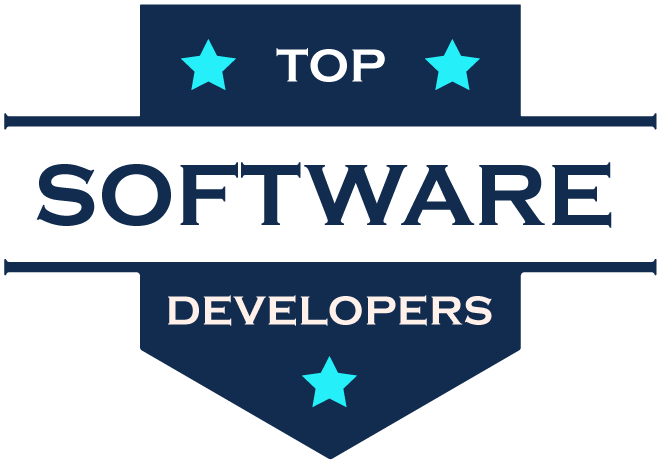WordPress powers over 30% of all websites, making it the world’s most popular content management system. With great power comes great responsibility – if you run a WordPress site, you absolutely must take steps to lock it down.
Hackers are constantly probing sites looking for vulnerabilities to exploit. A compromised WordPress site can lead to your site being taken over, sensitive data being stolen, or your server becoming part of a botnet to send spam. Even if you don’t collect sensitive user data, a hacked site damages your brand’s reputation.
Securing your WordPress site goes beyond just installing WordPress and forgetting about it. You need to be proactive about security, patching any vulnerabilities, limiting access, and monitoring for suspicious activity. It takes some technical knowledge and effort, but the consequences of an unsecured WordPress site make it well worth it.
In this guide, we’ll explore common WordPress vulnerabilities, essential security tips, the best security plugins to install, and why you need ongoing maintenance and monitoring through managed hosting or professional services. Read on to learn how to lock down your WordPress site.
Common WordPress Vulnerabilities
WordPress sites are often targeted by hackers because of some common vulnerabilities. Some of the most common vulnerabilities that make WordPress sites an easy target include:
- Outdated plugins, themes and core – If you don’t keep your WordPress site updated with the latest versions of plugins, themes and core, you become an easy target for hackers. Outdated versions contain vulnerabilities that get fixed in updates.
- Weak passwords – Using weak, easy to guess passwords for your WordPress admin login or hosting account makes hacking simple for attackers. Strong passwords with a combination of letters, numbers and symbols are essential.
- Lack of backups – Without regular backups, you have no way to restore your site if it gets hacked. Backups let you roll back to a clean version in case of a breach.
- No SSL certificate – An SSL certificate encrypts the data transmitted between your site and visitors. Without SSL, login credentials and other sensitive data are transmitted openly and can be easily intercepted.
Consequences of a Hacked Website
A hacked WordPress website can have disastrous consequences for any business. Some of the most common and impactful results of a security breach include:
- Blacklisting by Search Engines – If a site is hacked, search engines like Google may detect spammy backlinks, malicious content, or other signals that could get your site blacklisted or penalized. This destroys organic search traffic and hurts visibility.
- Website Downtime – Hackers often take sites offline entirely, replacing content with their own or just shutting the site down. Depending on the scale and complexity of the attack, it can take days or even weeks to fully restore functionality after being hacked.
- Data Breaches – Hackers can gain access to sensitive user data like names, emails, addresses, passwords, and payment information stored on vulnerable sites. This destroys customer trust and incur fines for violating data protection laws.
- Financial Losses – Between cleanup costs, fees for data breach insurance claims, reputational damage, and loss of business, the monetary costs of an attack are substantial. Most small businesses cannot fully recover.
Securing WordPress is critical to avoid these devastating consequences and protect your online business from existential threats. The impact of a single breach highlights why ongoing security requires constant vigilance.
Essential WordPress Security Tips
Keeping your WordPress site secure requires ongoing attention and effort. Here are some fundamental tips to help lock down your WordPress site:
- Use Strong Passwords: Always use strong, unique passwords for all WordPress user accounts and logins. Avoid common words or phrases, and opt for random passwords with a mix of letters, numbers, and symbols. Consider using a password manager.
- Keep Everything Updated: Run regular updates on WordPress core, all plugins and themes to ensure you have the latest security patches. Outdated software is a common target for exploits.
- Install an SSL Certificate: Add an SSL certificate to encrypt all data transmitted to your site. This prevents snooping on login details and other sensitive information.
- Choose a Trusted Web Host: Your web hosting provider handles key security aspects like firewalls and server hardening. Select a reputable managed WordPress host with strong security expertise.
- Limit User Accounts: Reduce your attack surface by only enabling required user accounts. Avoid accounts with admin access unless absolutely necessary.
- Backup Regularly: Maintain regular automated backups of your entire site, including the database. This ensures you can fully restore and recover your site if hacked.
Taking basic security precautions like using strong passphrases, updating frequently, and limiting user access go a long way towards securing WordPress. Partnering with a managed WordPress host and enabling security-focused plugins provide additional layers of protection.
WordPress Security Plugins
WordPress plugins are a great way to add extra security features and protection to your site. Here are some of the top plugins to consider:
Wordfence
Wordfence is one of the most popular security plugins, with over 2 million active installs. It includes a firewall, malware scanner, and real-time traffic monitoring. The firewall protects against common attacks like brute force login attempts. The malware scanner checks core files, themes, and plugins for malware or hacked code. Plus Wordfence sends alerts for suspicious traffic or files.
iThemes Security
iThemes Security, formerly Better WP Security, takes an all-in-one approach to locking down WordPress. It enables two-factor authentication, login masking, strong password requirements, and more. Extra protections like IP blacklisting, 404 detection, and file change monitoring further harden WordPress.
Sucuri
Sucuri targets the integrity of WordPress core files with File Monitor and Post Hack. It scans for unauthorized changes and helps site owners restore original files after an attack. The malware scanner works to detect malicious code or infections. DDoS protection and security headers defend against common attacks.
VaultPress
VaultPress emphasizes daily backups and malware scanning from the experts at WordPress.com. It performs scheduled scans to check for vulnerabilities or compromised files. The live backups and 1-click restore make recovery easy if issues emerge. Plus VaultPress includes firewall rules, strong passwords, and brute force protection.
The top WordPress security plugins help keep sites safe in different ways. For full protection, using a combination of plugins like a firewall, malware scanner, and file integrity monitor is recommended. But starting with one trusted plugin is better than none at all. They provide an extra level of security beyond basic measures like strong passwords and updates.
Web Application Firewalls
Web application firewalls (WAFs) provide an extra layer of protection for WordPress sites by monitoring, filtering and blocking potentially malicious traffic. WAFs work by sitting between a website and the internet, analyzing all requests and blocking threats before they reach the site.
Some key benefits of using a WAF include:
- Detect and block threats – WAFs can identify common web attacks like SQL injection, cross-site scripting, malware uploads and more. By blocking these requests, the site remains secure.
- Monitor traffic – A WAF acts like a security camera, providing visibility into all traffic headed for the site. This allows suspicious patterns and anomalies to be quickly identified.
- Provide extra layer of protection – Even if a vulnerability exists on the site, a WAF can prevent exploitation by blocking the attack vector. This adds redundancy to other security measures.
WAFs provide powerful protective capabilities customized for WordPress sites. For an added layer of security, using a WAF along with other measures like plugins and hosting is recommended. With comprehensive traffic monitoring, analysis and threat blocking, WAFs are an essential security tool.
Managed WordPress Hosting
A managed WordPress hosting provider offers a convenient way to ensure your site stays secure. A managed host handles important security tasks so you don’t have to.
Benefits of managed WordPress hosting for security include:
- Handles security updates and monitoring. The hosting provider will keep WordPress and plugins updated to the latest versions. They monitor for any known vulnerabilities or exploits.
- Provides dedicated IP address. With a dedicated IP, your site is isolated from other sites on the server. This makes you less vulnerable to attacks aimed at shared hosting environments.
- Includes security features. Managed WordPress hosts offer web application firewalls, malware detection and removal, DDoS protection, and 24/7 monitoring. Some provide threat detection services to identify suspicious requests.
Choosing managed WordPress hosting transfers the responsibility for security to experts. The host takes care of server hardening, protocols, firewalls, monitoring, patching, and incident response. This frees you up to focus on your site’s content and performance.
With robust security features and ongoing monitoring, managed WordPress hosting helps keep your site locked down tight. The peace of mind of security coverage can be worth the additional cost.
Why You Need Ongoing Maintenance
Keeping your WordPress site secure requires continuous effort. New threats emerge daily, so you can’t just set up security features and forget about it. Ongoing maintenance is essential.
Here are some reasons why relying on ongoing security services is important:
- New vulnerabilities are discovered frequently. Hackers are constantly finding new ways to exploit websites. The landscape of threats is always shifting. Your site needs regular updates and patching to stay ahead of emerging vulnerabilities.
- Plugins and themes require updates. The plugins and themes you use on your site also receive ongoing security fixes and updates. If you don’t keep these updated, that creates opportunities for hackers.
- Configuration issues can appear over time. Even if your site is configured securely initially, settings can get altered over time in ways that inadvertently introduce vulnerabilities. Regular audits help uncover risky configurations.
- Traffic and content changes expose new weaknesses. As your traffic and content evolves, it may open up new attack vectors that didn’t exist previously. Ongoing assessment ensures your security adapts along with your site.
- Human error happens. Even the most security-savvy site owner can accidentally misconfigure something or introduce an exploit. A second set of expert eyes reviewing your site regularly helps spot issues.
Maintaining strong WordPress security requires having continuous monitoring in place to catch threats as they emerge. It also requires understanding how to properly configure WordPress’ complex array of security settings—expert help is invaluable. Don’t take a “set it and forget it” approach to security. Ongoing maintenance is essential for robust protection.
WordPress Security Services
To keep your WordPress site secure over the long-term, partnering with a managed services provider for ongoing maintenance and monitoring is highly recommended. This ensures your protections don’t become outdated and new threats are addressed proactively.
Some key benefits of ongoing WordPress security services include:
- AMC Plans for Regular Updates and Config Checks – An Annual Maintenance Contract (AMC) provides ongoing configuration checks and updates to plugins, themes and WordPress core. This prevents security holes from emerging as software ages.
- Live Monitoring and Rapid Response – With 24/7 monitoring in place, any indicators of compromise or attempted attacks can be flagged immediately before major damage occurs. New threats are often detected and shut down within minutes.
- Expert Configuration of Security Features – Hardening your site correctly with firewall rules, user permissions, file ownership and other protections requires specialized expertise. Managed service providers have extensive experience implementing security best practices.
- Less Stress, More Peace of Mind – Trying to stay on top of WordPress security yourself can quickly become overwhelming. Outsourcing this to professionals lets you focus on your core business while resting assured your site stays locked down.
By partnering with a managed service provider that offers WordPress-specific security services, you can effectively reduce risks and prevent disruptions. The upfront investment pays dividends through reduced downtime, fewer breaches, and much less stress.
結論
WordPress security should be a top priority for any website owner. As we’ve discussed, WordPress sites are vulnerable to numerous threats if left unsecured. The consequences of a hacked site can be devastating, including stolen customer data, ransomware attacks, defaced webpages, and more.
Throughout this article, we covered several effective ways to lock down your WordPress site. This includes keeping plugins updated, using strong passwords, limiting user roles, enabling two-factor authentication, and installing a ウェブアプリケーション firewall. Security plugins like WordFence and Sucuri add another layer of protection.
Ultimately, the most secure option for WordPress hosting is to choose a managed service designed for security. An expert team will actively monitor your site 24/7 and provide ongoing security maintenance. For most site owners, it’s a wise investment to prevent the high costs that can follow a damaging hack.
To summarize, neglecting WordPress security is not an option. Taking a proactive stance is crucial to shield your site from cyber threats. While DIY security measures are beneficial, entrusting WordPress security specialists like カーマテック ensures the highest level of protection for your website. Don’t delay—take the necessary steps to safeguard your site effectively today.













